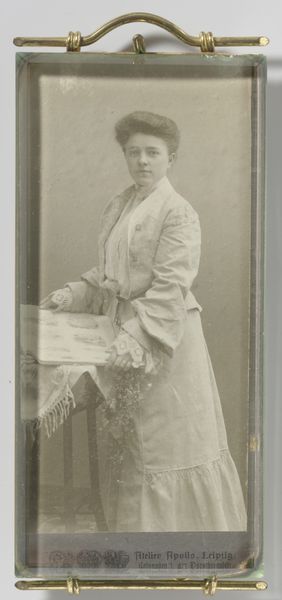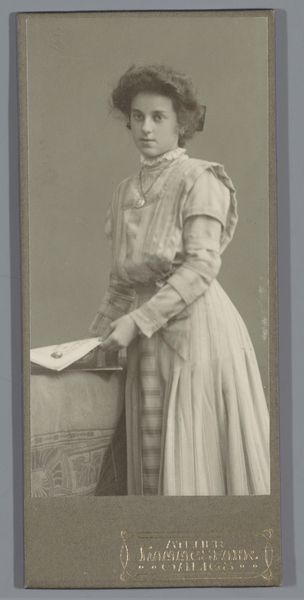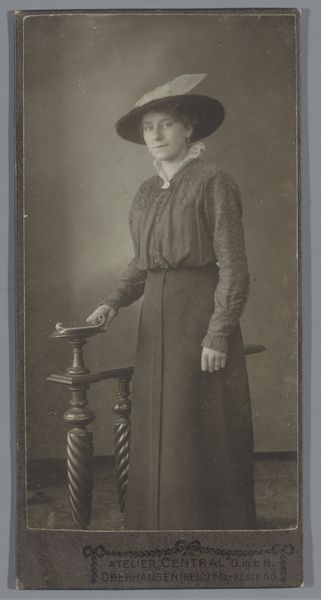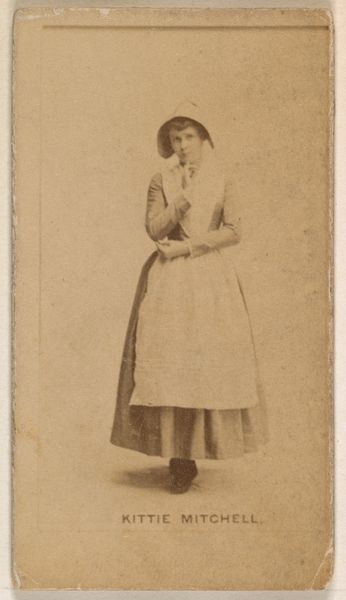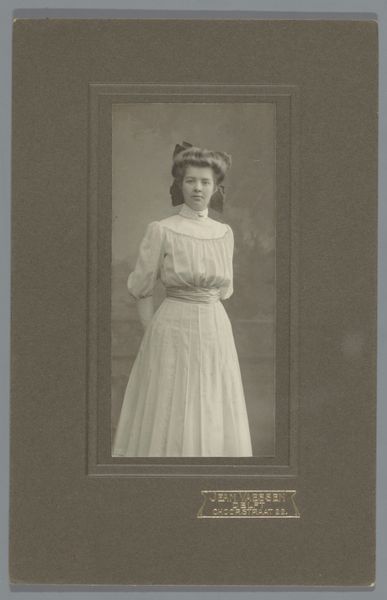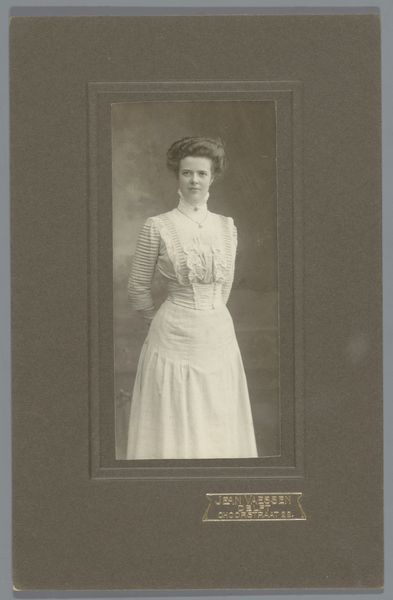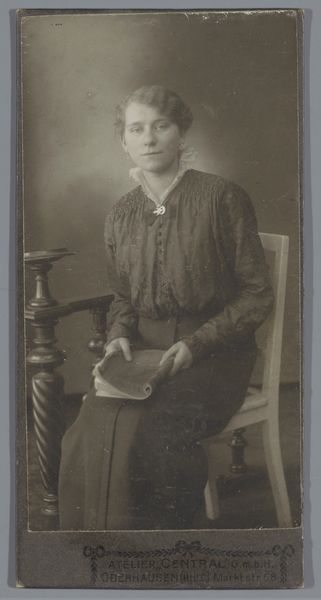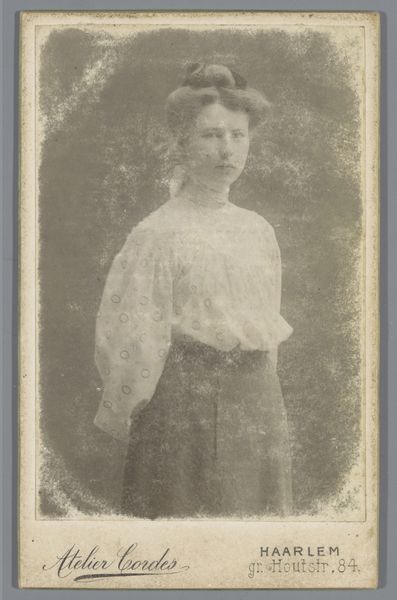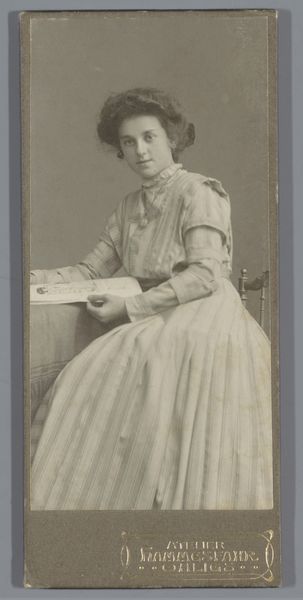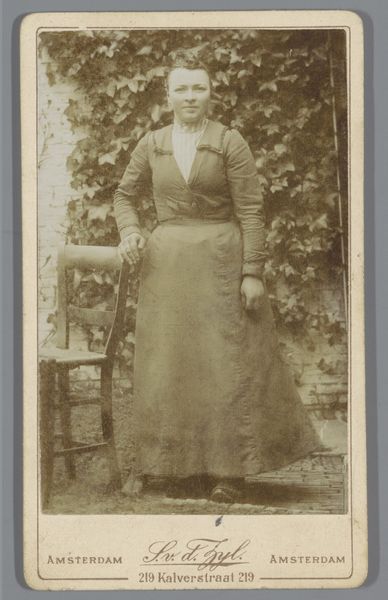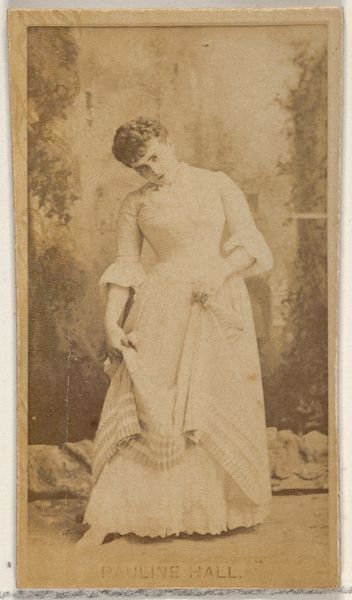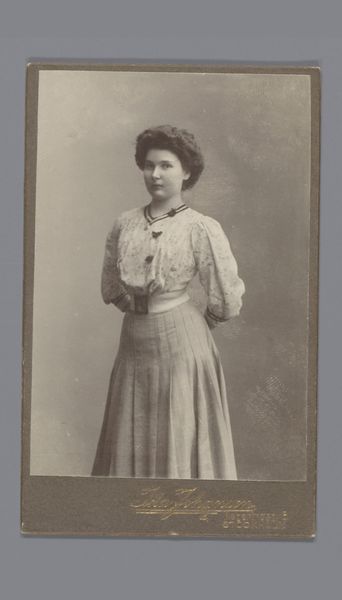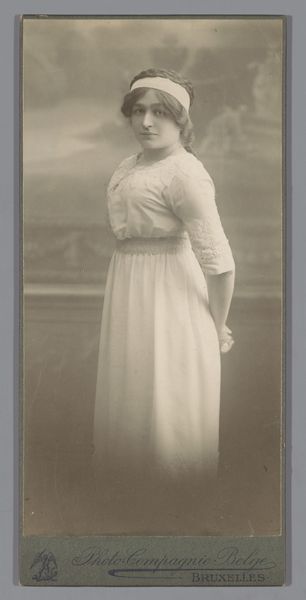
photography
#
portrait
#
dutch-golden-age
#
photography
#
academic-art
#
paper medium
Dimensions: height 117 mm, width 59 mm
Copyright: Rijks Museum: Open Domain
Editor: This is "Portret van Jeanne Enkelaar, echtgenote van G.N.P. van Eijk," a photograph by Anton Cornelis Thomann, probably from between 1910 and 1920. It’s striking how posed and formal it feels. I am curious, what’s your take? Curator: Considering photography's role in the early 20th century, we have to remember this was a developing commercial industry. Studios like Thomann’s mass-produced portraits. The “paper medium” tag points to specific albumen or gelatin silver processes, materials often connected to specific labor practices and the chemical industries of the time. Editor: So it's not just a straightforward capturing of reality, but part of an economic and social system? Curator: Precisely. Think about the availability and cost of photographic materials, the division of labor in studios - who mixed chemicals, who posed the sitters? These things shaped the image itself. And the subject's clothing, too. How would the mass production of textiles impacted how Jeanne presented herself? What statement does her dress make about how photography democratized access to portraiture, but also cemented new ideas about taste? Editor: It's fascinating to consider those material constraints and economic factors. It really makes me think about the act of creating this image, not just seeing it as a final product. It’s also an act of commerce, consumption and self-fashioning. Curator: Exactly! Understanding those processes unlocks a deeper engagement with the image and with art in general. What would a painting have cost for a family like the Enkelaars and van Eijiks, and how might that have altered our understanding of their roles in society? Editor: I see that shift in perspective so clearly now. Thank you!
Comments
No comments
Be the first to comment and join the conversation on the ultimate creative platform.
